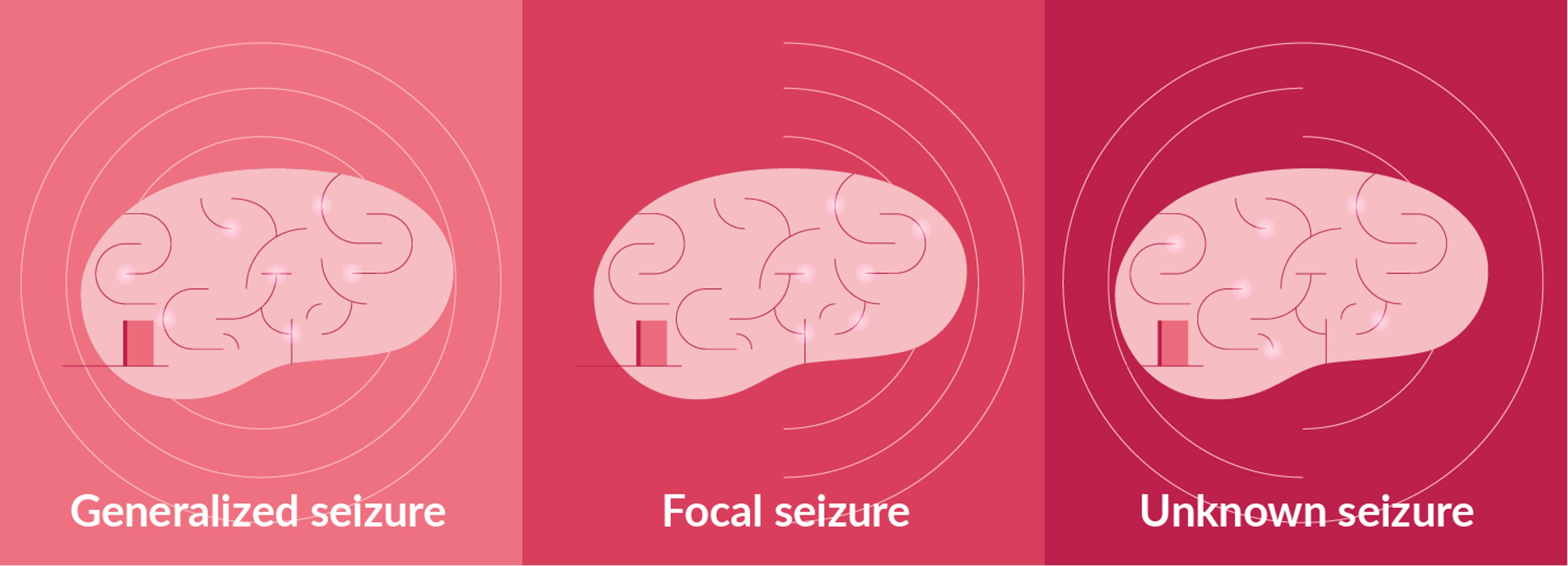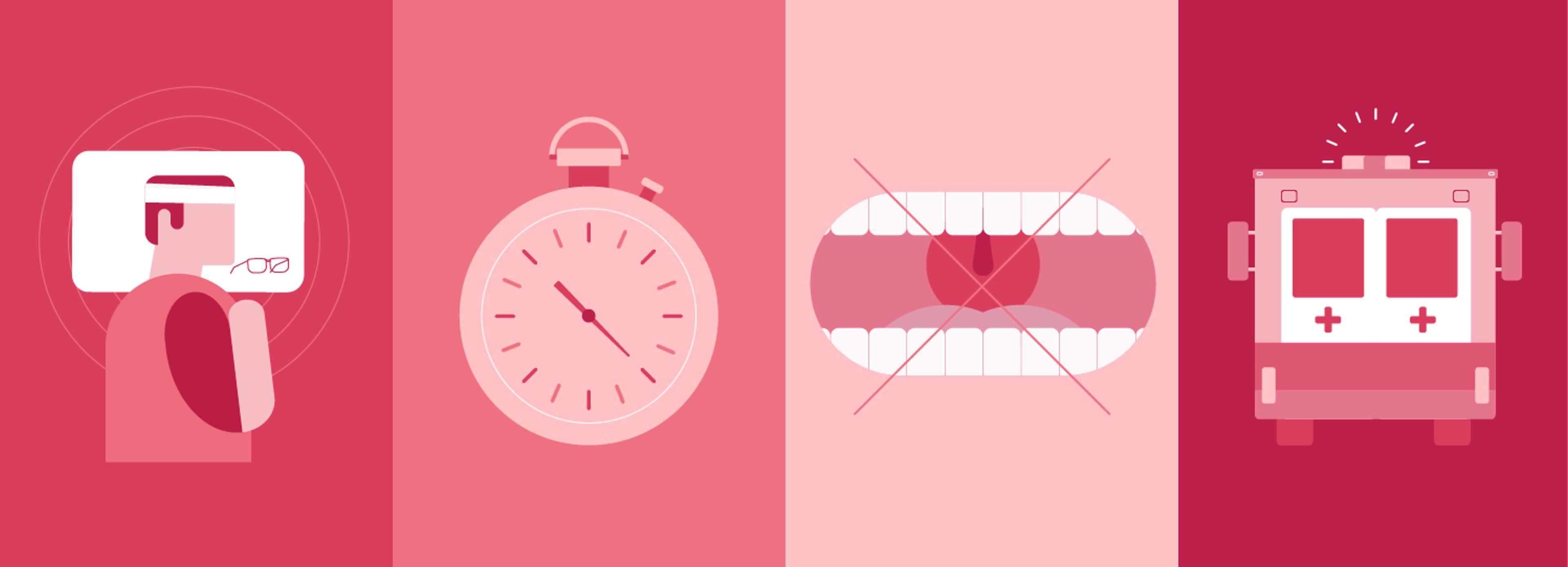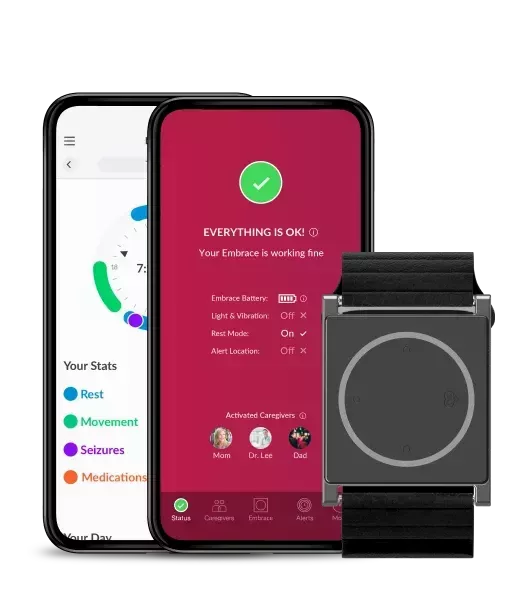Epilepsy Awareness Month: Show you care by being aware
Autumn is an important time for those living with epilepsy and for the people who love and support them; SUDEP Action Day was on October 18th this year and Epilepsy Awareness Month starts in November.

This year, Epilepsy Awareness Month is all about you, the epilepsy community. The month is devoted to circulating knowledge around epilepsy, dispelling myths, and it lets people with epilepsy know that they are not alone.
Our Embrace2 users have different supporters or caretakers that are contacted when Embrace2 detects a possible tonic-clonic seizure. Their supporters are the people who have taken the time to learn about epilepsy and how to react during an emergency, and they use Embrace2 to stay connected when they are apart.
This Epilepsy Awareness Month, we’ll be hosting a virtual webinar on November 29th 2 PM (ET) / 8 PM (CET) offering some clarity and assistance on how to better deal with anxiety and fear associated with epilepsy.
Dr. Rosalind Picard, our Chief Scientist, Co-founder, and MIT Professor, Dr. Patrick Brown, a pediatric epileptologist, and Dr. Julia Doss, a licensed psychologist will join us. Register here to secure your spot.
We’ll also be using our Facebook and Instagram channels to share inspiring stories from our Embrace2 users and their caregivers, as well as testing our followers’ knowledge and helping to educate people on this topic even more. All with the aim to raise even greater awareness of epilepsy for the brave epilepsy warriors we support.
Although epilepsy is one of the most common neurological conditions, the general public still knows so little about it. (1) And so it remains for many, a mysterious malady. This general lack of knowledge leads to misconceptions and fear, mainly stemming from not knowing how to help during a seizure.
Providing a better understanding of epilepsy and tools to help people with the condition and their caregivers is at the heart of what we do. We’d like to do our part by informing you on what epilepsy really is, eliminate the fear surrounding it, and show you that epilepsy doesn’t need to hold you back from achieving all that you want to.
What is epilepsy?
It’s quite odd that a condition that has been around since ancient times, around 2,000 B.C. still creates so much confusion.² Derived from ancient Greek, the term “epilepsy” means etymologically “take by surprise”.³ It’s not an illness or a disease, but a neurological condition which the person must learn to live with.
The causes can be complex, and sometimes hard to identify for about half the population with epilepsy.⁴ Infections of the brain, strokes, tumors, lack of oxygen during birth, and genetic factors are just some of the common causes.⁵ What’s important to remember is that epilepsy doesn’t affect intelligence, and it’s definitely not contagious.⁶

A spontaneous surge of electrical activity in the nerve cells of the cerebral cortex causes epileptic “seizures”, and there must be recurrent seizures in order for the person to be diagnosed with epilepsy. There are many different types of seizures.
They can range from muscle twitching or lapses in attention, to severe convulsions and prolonged seizures. They’re different for different people, and for each person may slightly vary in nature from one to another.⁷
Generalized seizures
Generalized seizures affect the whole brain. Tonic-clonic are the most well-known because of the visible symptoms they manifest: convulsive jerks, stiffening of muscles, loss of consciousness, and sometimes drooling and tongue-biting. When the seizure is over, the person immediately becomes conscious, but does not remember any part of the seizure.
Absence seizures are also classified as the Generalized type, however they do not produce much movement. Instead, they result in brief periods of loss of consciousness. Sometimes they appear as being in a daze, and can occur several times throughout the day.⁸

Focal seizures
Focal seizures start in one area of the brain. They can also be referred to as partial seizures. They always affect only one hemisphere of the brain and are often characterized between focal onset aware seizures and focal onset impaired awareness seizures. In a focal onset aware seizure, there is no loss of consciousness, and the person can usually remember the seizure. They usually last for a minute or less.
On the other hand, during a focal onset impaired awareness seizure, the person’s attention is affected. They can last for a minute or two and are usually preceded by a feeling of uneasiness or nausea. Most people will move their mouth, rub their fingers or pick at their clothing. Some may say words or phrases which aren’t understandable.⁹
Unknown onset seizures
These occur when the origin of the seizure is not known. For example, if it’s someone’s first seizure and there were no witnesses. As more information is known, these can later be categorized as generalized or focal.¹⁰
How to help
Knowing more about epilepsy helps reduce the feelings of fear around it. Knowing how to react in case of a seizure will make you not only less scared if you witness one, but also very helpful to the other person- you may even save their life. Here’s what you should do:

1. Prevent the person from getting hurt
This means removing any sharp and potentially dangerous objects. If they’re wearing glasses, take them off. If they are on the floor, place a pillow under their head. If the person is lying down, turn them on their side. This allows any fluids to come out of the mouth.
2. Time the seizure
Note the time that it started and the time that it ended. This information will be useful later on.
3. Don’t stick anything in their mouth
If they are biting their tongue, it’s okay. It’s a misconception that the tongue can be swallowed. Sticking something in their mouth could do more harm and cause them to choke.
4. Should I call for help?
You should call an ambulance if the seizure continues for more than 5 minutes. For some people, longer seizures are normal, and an ambulance is not required. If they haven’t shared this information with you, it’s best to call an ambulance. You should also call for help if the person has injured themselves during the seizure.¹¹
When the person wakes up, it’s good to make sure that there aren’t too many people around that will press them with questions. When they’re ready, tell them how the seizure unfolded and provide them with all the information you have. The most important thing is to stay calm; most seizures stop on their own after a few minutes.
Those that have epilepsy should inform others about their condition and always have a written emergency care plan with them that tells people what to do in case of a seizure.
Living with Epilepsy
People with epilepsy are as intelligent and as capable as anyone. Sometimes geniuses have epilepsy, such as Julius Caesar, Einstein, and Alexander the Great¹² among others. They may have had to take some extra precautions, and faced different challenges, but they also achieved great things, and celebrated big successes.
Just take a look at some of our own epilepsy heroes. You’ll be inspired.
You may have epilepsy or know someone who does that is looking for added reassurance that they'll receive timely assistance when they experience a seizure. Embrace2 by Empatica is an epilepsy monitoring smartband which can alert caregivers when it detects changes in movement patterns and physiological signals that could be associated with tonic-clonic seizures. It also tracks physical activity and rest, which are displayed in one of its companion apps, the Mate App. This additional information can provide useful insights for doctors and caregivers. If you have more questions about Embrace2, check out our other blog post.
We believe that talking openly about epilepsy is the best hope for ending the stigma around it. We encourage you to increase awareness in your own way. It could be by donating to your favorite epilepsy charity, sharing your story with close ones, or even something so simple as sharing this article. Every small action makes a difference.
Words worth reading
Embrace2 is a prescription-only medical device indicated as adjunct to seizure monitoring (subjects age 6 and up with epilepsy or at risk of epilepsy) in home or healthcare facilities during rest. Embrace detects patterns that may be associated with generalized tonic clonic seizures. For safety information, please refer to Embrace IFU.
Sources
¹ Epilepsy Foundation, What is Epilepsy?
² National Epilepsy Training, A brief History of Epilepsy.
³ Epilepsia, Volume 44, Issue 6 (2003), The History and Stigma of Epilepsy.
⁴ National Institute of Neurological Disorders and Stroke, Epilepsy and Seizures.
⁵ Epilepsy Foundation, Causes of Epilepsy.
⁶ Bryson, J. (2012). High Achievers and Seizures.
⁷ Epilepsy Foundation, National Epilepsy Awareness Month.
⁸ Epilepsy Foundation, Seizure Types.
⁹ Epilepsy Action, Focal-Seizures.
¹⁰ Epilepsy Foundation, Unknown Onset Seizures.
¹¹ Healthline, Seizure First Aid: How to Respond When Someone Has an Episode.
¹² Edmonton Epilepsy Association, Famous People with Epilepsy.




